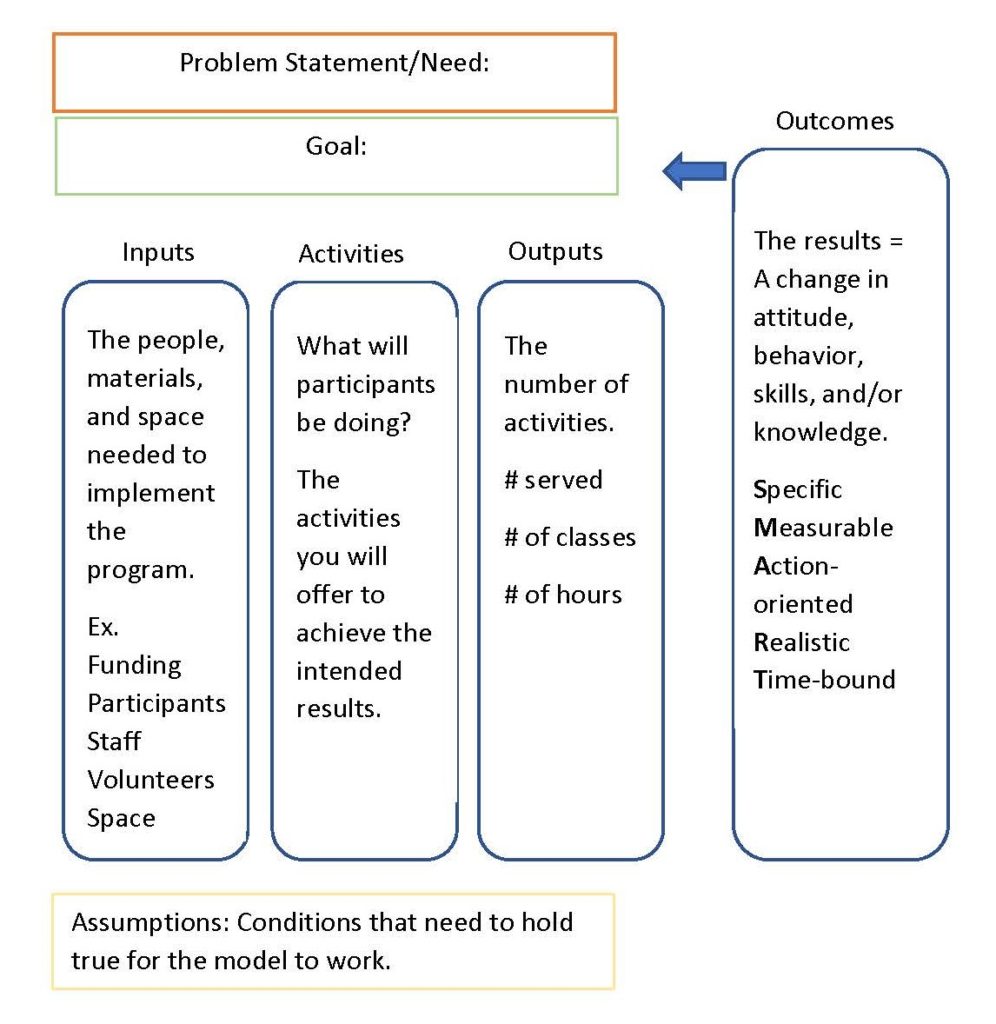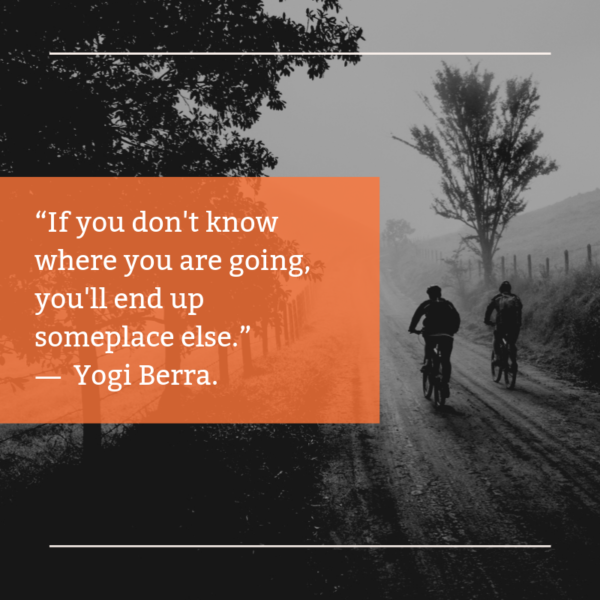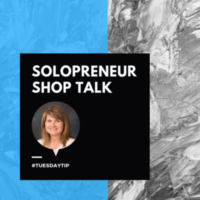In the nonprofit world, a logic model is a visual representation of how a program works, with a clear description of the intended outcomes and the resources and activities you’ll use to get to those outcomes. You’ll also outline assumptions you’re making and any external factors that could influence your results. The process is best conducted with a group of stakeholders, people closely aligned with the program rather than one person developing the model solo. There are multiple models although I prefer the one-pager.
Here is a visual overview of the components:

The logic model process should be engaging, interactive, and collaborative. If you’re building your logic model as you design the program, begin with the needs statement and intended outcomes. If you’re developing a logic model for an existing program, start with the inputs and activities so you can be clear if your activities achieve the intended outcomes.
You’ll test your completed model against an If-Then framework. If the Inputs are implemented, then the Activities will occur. If the Activities and resulting Outputs are accomplished, then the Outcomes will be achieved. Check for missing links between Activities and Outcomes. Test for gaps within the model. Check that the identified Needs have a corresponsing Outcome.
Once you have your logic model complete, share it with staff and partners. Come back to your logic model each year to check that you’re implanting the program as planned or if changes are needed to the model.
If you’re local to Annapolis, we’re having a mini-workshop as part of our Annapolis Nonprofit Networking series on October 17- The Logic Model session. It’s part of an ongoing series to help nonprofit leaders connect and share knowledge. We’d love to see you there.
For further reading on logic models and examples, see the University of Wisconsin-Madison Department of Program Development and Evaluation.


